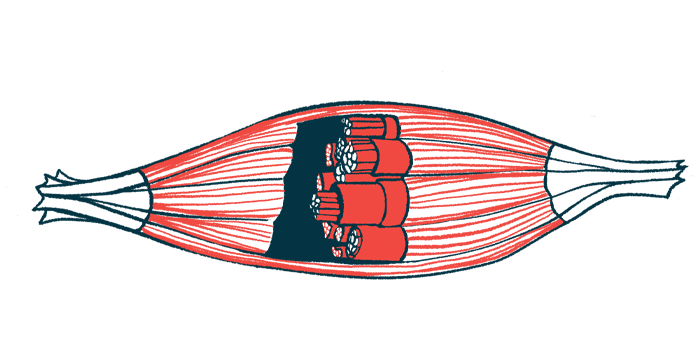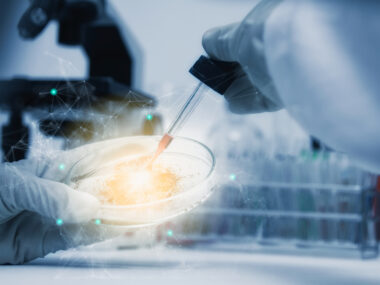3 genes ID’d as potential biomarkers of disease progression: Study
Findings highlight 'significant role' of immune factors in Pompe
Written by |

Three genes related to the regulation of immune responses — GPNMB, CALML6, and TRIM7 — show abnormal activity in immune cells infiltrating the muscles of people with infantile-onset Pompe disease, according to a new study from researchers in China.
All three were found to be associated with regulatory T-cells, a type of immune cell that regulates responses of other immune cells and may reduce inflammatory response in muscles to allow muscle repair.
“The findings of this study highlight the significant role of immune factors in the [development] and progression of Pompe disease, underscoring the importance of monitoring and managing the immune response in patients to optimize treatment outcomes and improve prognosis,” the researchers wrote.
The results also suggest that these genes may be novel biomarkers of disease progression in Pompe, the team noted.
The study, “Analyzing immune cell infiltrates in skeletal muscle of infantile-onset Pompe disease using bioinformatics and machine learning,” was published in the journal Scientific Reports.
Investigating whether immune dysregulation affects disease progression
Pompe disease is caused by mutations in the GAA gene, which result in low levels of the acid alpha-glucosidase (GAA) enzyme. That enzyme is necessary to break down a complex sugar molecule called glycogen. As a consequence of those low GAA levels, glycogen builds up to toxic levels in cells, leading to symptoms such as progressive muscle weakness, and breathing and heart problems.
Infantile-onset Pompe, marked by symptom onset during the first year of life, “is particularly severe,” the researchers noted, adding that “without treatment, this form is fatal in infancy.”
The mechanisms behind the disease are not fully understood, but evidence suggests that “immune system abnormalities may occur in Pompe disease patients,” the researchers wrote. Such abnormalities may include macrophage infiltration into muscle tissue, but, the team noted, “there is limited evidence of significant infiltration by other inflammatory cells.”
Now, researchers from West China Hospital at Sichuan University set out to evaluate whether Pompe-causing GAA mutations also trigger a dysregulation of the immune system — one that can affect the disease course.
The team analyzed two datasets detailing the gene activity, or gene expression, profile in muscle samples from 23 people with infantile-onset Pompe as well as 20 healthy individuals, who served as controls. The goal was to uncover genes that could be associated with the disease and have a role in immunity.
The results showed that 38 genes were differently expressed in Pompe patients relative to healthy controls: 19 genes showed significantly higher activity, while the remaining 19 were significantly less active.
Researchers focus on 3 genes: GPNMB, CALML6, and TRIM7
The use of bioinformatics tools then allowed the identification of three genes that could have biological relevance for the disease: GPNMB, CALML6, and TRIM7. GPNMB was significantly more active in Pompe patients relative to the healthy controls, while CALML6 and TRIM7 showed significantly lower activity levels in patients.
The GPNMB gene codes for a protein of the same name, which is involved in the modulation of key immune pathways that could exacerbate or mitigate muscle cell damage in Pompe.
CALML6 provides instructions to produce CALML6, a protein with a role in calcium signaling and the regulation of cellular processes, including reducing inflammation. The TRIM7 protein, coded by TRIM7, is involved in cellular growth and maturation, and regulation of immune response.
Overall, our study results may provide new clues for exploring markers related to Pompe disease by highlighting key genes and their relationship with immune [cell] infiltration [into muscle tissue], offering insights into the disease’s development [as well as] potential targets for the treatment of Pompe disease.
Next, the researchers used another bioinformatic tool to assess the relative proportion of immune cells in the muscle tissue of Pompe patients versus healthy controls based on the cells’ gene expression profiles.
Neutrophils, which act as the immune system’s first line of defense in destroying disease-causing agents, were more abundant in Pompe patients, the results showed.
Significant differences also were seen in the levels of other immune cells, particularly regulatory T-cells, that were associated with all three genes. The T-cells not only regulate the activity of other immune cells but are also recruited to muscle cells upon injury, moderating inflammation to allow muscle repair.
Thus, changes in the activity of the GPNMB, CALML6, and TRIM7 genes “could potentially alter the immune environment surrounding the impaired muscle tissue in Pompe disease, impacting disease progression and symptom manifestation,” the researchers wrote.
“Overall, our study results may provide new clues for exploring markers related to Pompe disease by highlighting key genes and their relationship with immune [cell] infiltration [into muscle tissue], offering insights into the disease’s development,” as well as “potential targets for the treatment of Pompe disease,” the team added.
The researchers noted, however, that there is limited evidence regarding immune cell infiltration in patient muscle, so further studies are needed to validate these findings.







